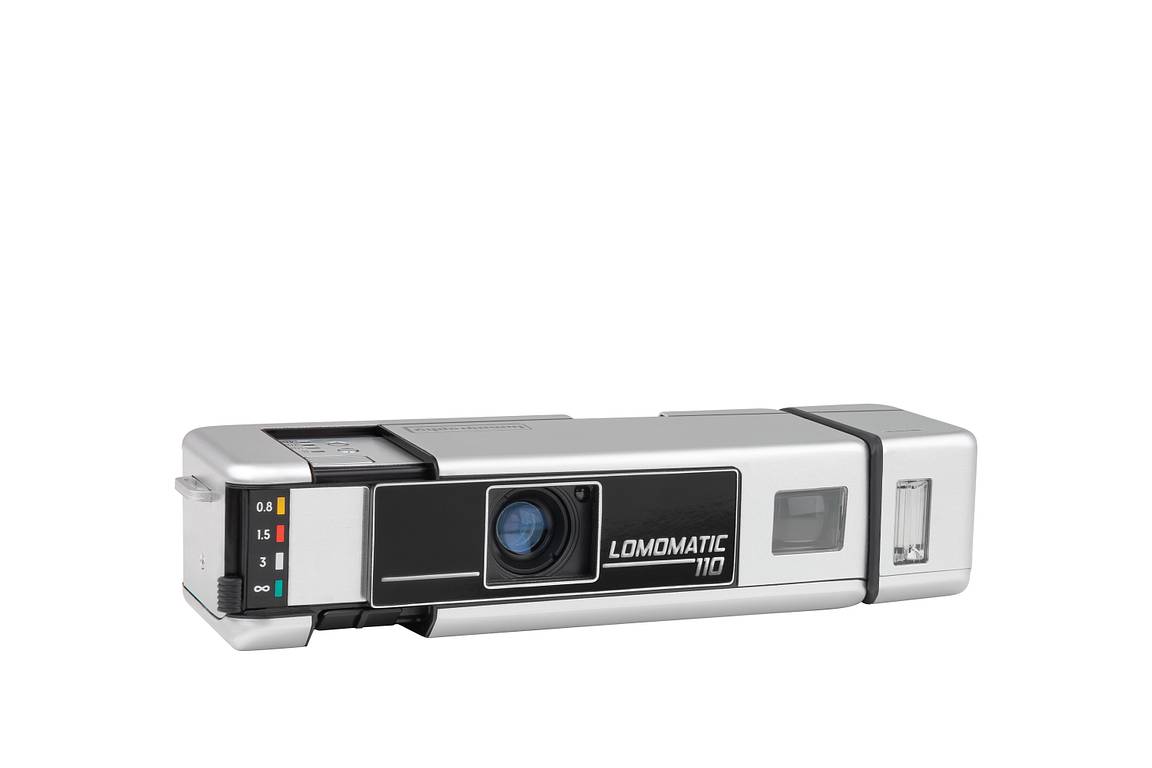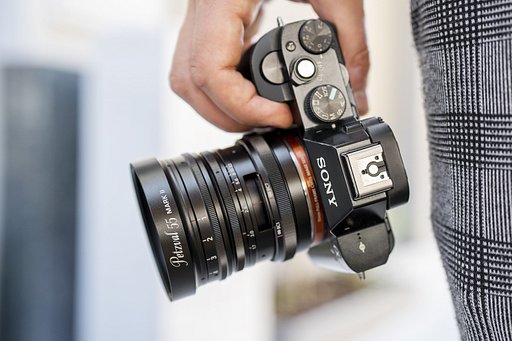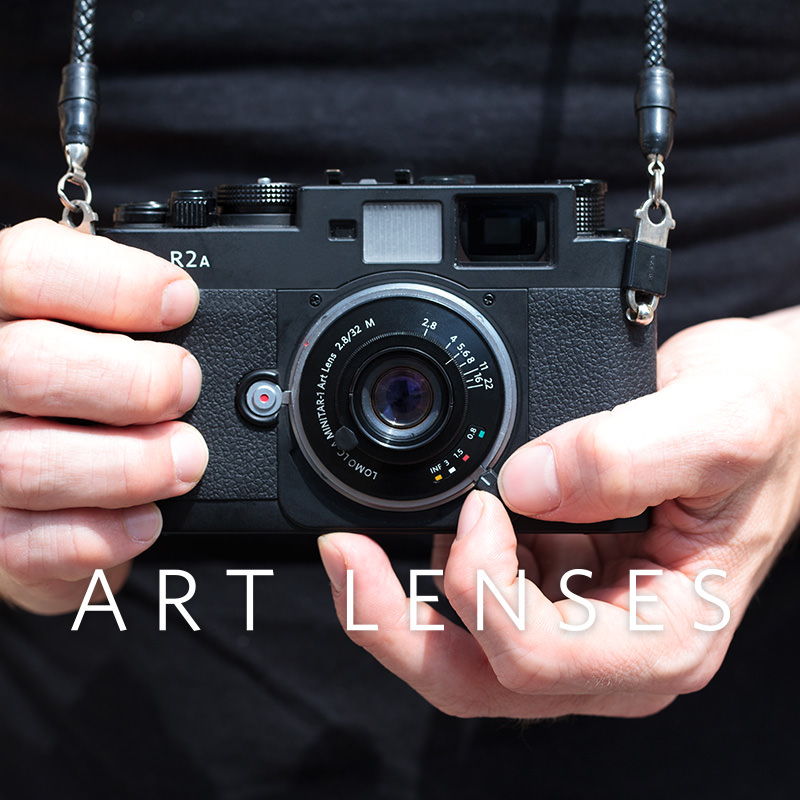Stop Motion with the Lomomatic 110 and BellBoyPhotos
1 7In the world of film photography, sometimes the most experimental tools can lead to the most exciting creative breakthroughs. Aidan Bell, or BellBoyPhotos, a seasoned film photographer and filmmaker, recently took on a unique challenge—creating a stop-motion project with the Lomomatic 110, a tiny but mighty device perfect for capturing moments in the most analogue way possible.
With the help of Color Tiger 110 and Lobster Redscale 110 film stocks, Aidan and dancer Josh Lyda crafted a sequence of stunning poses, blending movement, emotion, and color in a way that only film could achieve. The project, which pushed the limits of what’s possible with 110 film, not only tested Aidan’s technical skills but also gave him the freedom to embrace the unpredictability that comes with analogue processes.
In this interview, Aidan opens up about his experience working with the Lomomatic 110, the challenges of shooting stop-motion with such a small format, and how the tactile nature of film influenced the final product. He also reflects on the creative possibilities that emerge when you combine old-school techniques with modern storytelling.
Hey Aidan! Welcome to Lomography Magazine. It’s great to have you. Can you tell us a little bit about your background and photography work?
I'm Aidan Bell, a film photographer and filmmaker with eight years of experience. I've written for Casual Photophile and worked on various sets for companies like TLC and Spectrum. Currently, I’m an active freelance photographer, always seeking new stories to capture. My ultimate goal is to pursue photojournalism or create my own films. My friends know me as BellBoyPhotos.
You got the chance to play around with the Lomomatic 110 for a stop-motion project. What were some of the aspects of shooting on such a small format?
For starters, my first time shooting on a 110 camera was for this project. I truly approached it with a 'let’s wing it' mindset, which is the complete opposite of how I’d approach a true motion picture film project. However, something about having a single-shot camera the size of my palm made me lean into and embrace the spontaneity of film more than I would have if I were limited by time, money, or resources.
Granted, the 'smallness' of it didn’t make things easy. With the Lomomatic, it can be difficult to feel confident with a viewfinder assembly smaller than my fingernail. Other challenges, due to the compact nature of the system, include the lack of a tripod mount, limited zone focusing, and just two exposure options. There were some serious limitations, and I was eager to work around them to make a stop-motion project work.
What is the concept for this project, and how did you come to decide on creating a stop-motion video with 110 film?
I’ve been wanting to do a big stop-motion project for a while. I grew up documenting things this way—obsessed with Lego stop-motion, photo books of my toys, and even 'hyperlapses,' as people call them today. This idea started as a drunken conversation between my very talented dancer roommate, Josh Lyda, and me, to showcase his dance moves and his ability to hold a pose, while giving me a chance to experiment more with film. Originally, Josh and I wanted to do this on medium format film—big resolution, big negatives. However, our conversations shifted toward my desire to try a format I hadn’t yet explored. I’ve worked with large, medium, and even small formats, but I’ve never gone smaller.
When Lomography gave me the chance to test out the Lomomatic 110, something just clicked. I rounded up Josh, explained our original idea, but this time, on a smaller scale. With the generosity of Lomography, I was set up with the Lomomatic 110, five rolls of film, a pat on the back, and a 'good luck, kid.' And then, I got lomographic.
What type of film did you use for this project, and why did you choose that specific type of film over others?
When Josh and I were in pre-production, we decided that with an analogue medium, we should have something physical to show a change in emotion. Originally, we thought about making his poses more erratic as the music got more intense. But as we continued planning, we realized we needed something else to make such a short concept video more engaging. So, we placed a red balloon behind Josh. For the first few seconds of our sequence, we shot on Color Tiger 110, to capture true-to-life colors. Halfway through the sequence, when the red balloon pops, we switched to Lobster Redscale 110, to give everything a deep, red hue. We chose these specific films to capture a sense of realism before completely going off the rails with poses, music, color, and movement.
What is your experience with shooting 110 film, and how did that compare to other film formats you’ve worked with in terms of both technical and emotional impact?
I think the best thing I can say about 110 as a format is that it’s cute. I most likely wouldn’t use it for professional work unless a client wanted something extremely experimental like this project. However, after spending time with this camera, I found myself grabbing it more often than my other cameras for a night out at a bar or a party. A cute camera for cute documentation, if you will. In terms of technical impact, this camera felt like it was designed for on-the-go shooting. There’s a reason 110 was originally used for spy cameras, and that’s exactly what it feels like. It’s small, discreet, and captures swift, fleeting memories—or an emotional impact.
When you were working on the stop-motion, did you find yourself embracing a more tactile, hands-on approach to filmmaking? How did using a camera that requires so much manual interaction change the way you engaged with the project?
Throughout the hour of shooting, I was glued to the camera, getting crafty to make mine and Josh's concept work. With no tripod mount, I duct-taped the camera to the tripod head in a way that wouldn’t interfere with film advancement or changes in settings. For the most part, my settings stayed the same until I changed the film stock. Like a meticulous filmmaker, I checked the settings between each shot—making sure the aperture stayed the same and adjusting the focus zone based on Josh's position. To keep everything in place and the settings correct, I was constantly adjusting the camera to minimize movement. Josh relied on my direction, and I relied on his precise movements. With any motion picture camera, this would have been a simple shot for a decent crew to execute quickly. Using the Lomomatic 110, we had to get ‘lomographic’ to make it work.
Could you walk us through your thought process on blending analogue techniques like 110 film with modern storytelling?
I think too often film is referred to as the 'old way,' which I find a shame because it’s truly having a resurgence. There’s constant innovation, like the invention of new film stocks or cameras. Naturally, this breathes new life into old equipment and techniques. Shooting 4x5 sheet film in an SX-70 wasn’t even considered until recently. Kodak just released a digital Super 8 camera. My thought process in this project isn’t to use analogue techniques with modern storytelling, but rather to prove that old techniques—like 127-year-old stop motion—can still be achieved minimally with new tech being released today.
Do you think the constraints of film brought something out in the project that digital could not have?
100 percent. However, I feel it’s only fair to mention that I’d think this about any project. Film is meticulous; digital is not. Josh and I shot this in the cold, and just taking the images took us nearly an hour. With digital, we’d have been in and out. Choosing analogue forces me to slow down and think. In my opinion, shooting on film brings out the same emotions as digital, but the impact is stronger. You’re doing the work. With this project, shooting on 110 film almost felt like it was working against me. I couldn’t see the images, and the camera itself was restrictive, but that made it more rewarding. I had to work to ensure my zone focusing was right and shot a test roll to understand the camera’s limited exposure settings. It made the project feel personal, impacting me more than any digital work has.
Stop-motion often requires a lot of meticulous planning. How did you approach the planning process for this project, especially considering you were working with a dancer to bring the story to life?
Yes, it does! Meticulous doesn’t even begin to describe how painstaking it is—I’d call it 'laborious and overwhelming.' Josh and I planned a pose for every second (16 frames) and set about 8 checkpoints. Before shooting, we figured out how to transition from Pose A (0 seconds) to Pose B (1 second) to create fluid motion. Having a dancer like Josh made this much easier. He could hold strenuous poses that someone without his flexibility couldn’t, which helped make the final video look like he was dancing. In reality, he was standing on one foot, rotating bit by bit, frame by frame, while keeping his torso at the perfect angle
Working with 110 film is a more experimental medium. Did you feel that it opened up any new creative possibilities or allowed you to capture things in a way you hadn’t before?
I had to think smaller. In a way, that’s it. I was able to move faster than with a larger medium, but at its core, for me at least, a photography project is driven by creativity and a desire for documentation, no matter the method.
Film has a certain unpredictability to it—how do you embrace that? Did the "mistakes" or surprises from using 110 film become part of the final story you were telling? How do you view those imperfections in the context of your creative vision?
There’s always a risk with shooting film, professional or not. I’ve been on sets where proving my worth was very important to me. Even during those times, I’ve hit the shutter button and wasn’t confident something would actually show up. I know what it’s like to get back a blank roll, heavy motion blur, or light leaks. Realistically, you never know what might happen to something light-sensitive, especially when you can’t see it until it’s had a 45-minute chemical bath and massage. I’ve learned to embrace not knowing the final product until after it’s developed, because stressing about it would only distract me from the project’s main intention.
With this 110 project, my main concern was making sure Josh was in the right position. And while I didn’t get any blank frames, I did get multiple double exposures, some with heavy motion blur, and some with slightly different exposure values. These 'mistakes' actually helped push the story in the final product, adding accents that made our fast-paced slideshow slightly deranged and confusing enough to keep the viewer hooked.
Looking back at this project, do you think working with the Lomomatic 110 has shifted the way you view your other projects, or has it inspired new ideas for your future work?
I view each of my projects with the same eye. I’m extremely judgmental of myself, regardless of the methods used. I think the time and effort put into animating gave me a clearer sense of what I’m actually capable of with still photography. Naturally, this successful use of the stop-motion method is inspiring new ways for me to tell stories. And, as always when a project finishes, it’s on to the next!
Thanks Aidan for taking the time to tell Lomography Magazine all about your stop-motion project! You can find more of Aidan's work on his Instagram.
written by chloefuller on 2025-04-16 #gear #people #videos #redscale #stop-motion #100-film #lomo-tiger-110 #lomomatic-110




























One Comment